Introduction
How Many Rats In A Litter: The rats in a litter may seem simple at first glance, but it opens the door to a fascinating world of biology and reproductive strategies within the rodent kingdom. Rats, those ubiquitous and often misunderstood creatures, have long been subjects of scientific inquiry and intrigue, owing to their remarkable adaptability and prolific breeding habits. In mammalian reproduction, rats are notorious for their high fertility rates and rapid population growth. A litter, in the context of rats, refers to the group of offspring born to a single mother in a single reproductive event. These little rodents have evolved an astonishing capacity for reproduction, and understanding the size of their litters is crucial not only for scientific purposes but also for pest control and public health efforts.
To rat hood are in a litter, we must delve into the intricacies of rat biology. Rats, specifically the common brown rat and the black rat, are known for their adaptability to diverse environments, from urban alleys to rural barns. One of the secrets to their success is their reproductive strategy. Female rats, or does, reach sexual maturity remarkably early, often at just five weeks of age, and their estrous cycles are short, typically lasting only four to five days. These factors contribute to the rapidity with which rat populations can expand. When a female rat becomes pregnant, she carries her litter for about 21 to 23 days before giving birth.
The number of offspring in a rat litter can vary widely depending on several factors, including the age and health of the mother, environmental conditions, and the availability of resources. On average, a rat litter can range from 6 to 12 pups, with some reports of litters as large as 20 or more. This wide variation underscores the adaptability and versatility of rats as a species. As the intricacies of rat reproduction attempt to answer the question of litter size, we gain insight not only into the reproductive biology of these creatures but also into the challenges and implications of managing rat populations in various contexts, from urban pest control to scientific research.
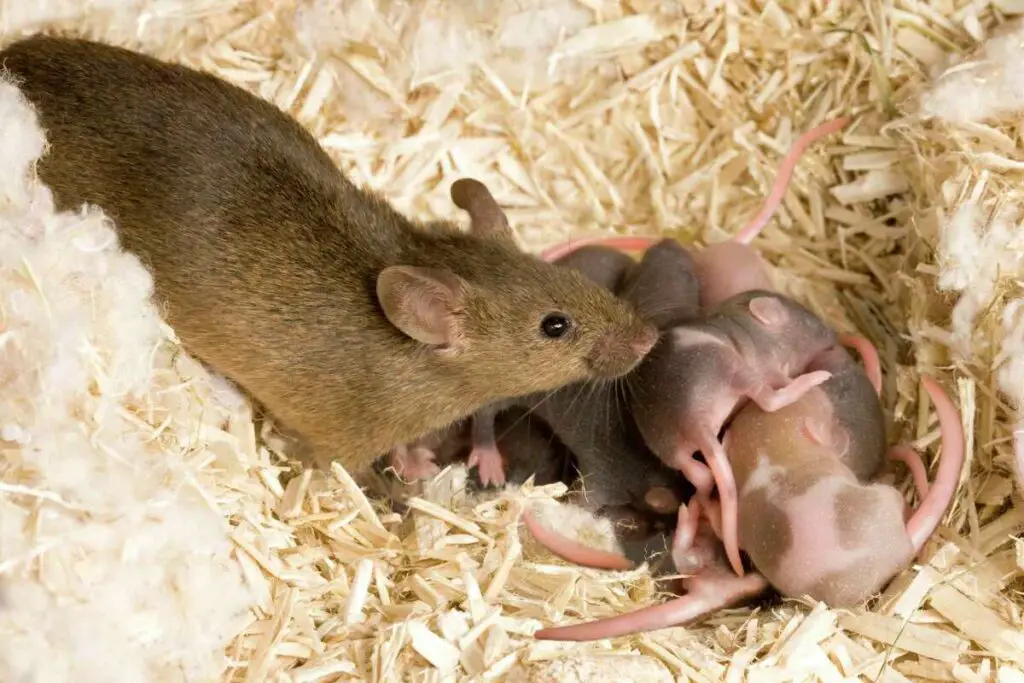
How many mice in a litter?
Each litter typically consists of five or six mouse pups, though it’s not rare to see as many as 12 in a litter. A typical female mouse can birth between five and 10 litters per year. She can mate immediately after giving birth, meaning mice can birth a second litter in as little as 25 days after the first.
Mice belong to the Muridae family, and the most commonly encountered species are the house mouse (Mus musculus) and the deer mouse (Peromyscus spp.), among others. These rodents have evolved intricate reproductive strategies that allow them to thrive in diverse habitats, making them a valuable model organism for scientific research.
Mice exhibit a range of reproductive strategies, influenced by factors such as species, environmental conditions, and the availability of resources. Typically, a female mouse, or doe, reaches sexual maturity at about five to six weeks of age. Once sexually mature, she undergoes a regular estrous cycle, with each cycle lasting approximately four to five days.
The dynamics of mouse reproduction is of great importance, not only for scientific research but also for practical applications. In laboratory settings, mice are commonly used as model organisms for a wide range of studies, including genetics, physiology, and disease research. Reproductive patterns help researchers manage breeding colonies effectively.
In natural and urban environments, mice can be both pests and vital components of ecosystems. Their rapid reproductive rates can lead to population explosions, causing damage to crops and structures. Pest control measures often focus on disrupting mouse reproduction to manage their populations.
How many rats make a family?
The population size will depend on the type of rat. The Brown rat has 5 to 15 rodents per nest. There have been as many as 100 in a single nest in some cases. Indoor nests are usually restricted to between 5 and 10 rats; however, you may find a colony with multiple nests made up of mature and young rats.
In the world of rats, a family is often referred to as a “colony” or “pack.” These colonies are not family units in the way we traditionally think of them but rather loose associations of rats with complex social hierarchies.
A typical rat colony consists of several individuals, with the size varying depending on factors such as food availability and habitat. A colony can range from a few rats to several dozen. Within the colony, rats establish a social hierarchy, where dominant individuals hold sway over subordinates.
The hierarchy within a rat colony is established through a combination of physical dominance, aggression, and territorial behavior. Dominant rats, often referred to as the “alpha” rats, enjoy priority access to resources like food and shelter. They also have a higher likelihood of mating with females in the colony.
Subordinate rats may have to wait their turn for access to resources and often occupy lower positions in the hierarchy. In some cases, subordinate rats might be expelled from the colony altogether, especially if they pose a threat to the dominance of others.
Can 5 rats live together?
Rats can live in pairs, although a trio or more is as they create their own social network. Pairs of rats can sometimes get agitated with one another and will tend to show dominant behaviour. Time spent out of the cage and fun training can help prevent this. It’s best for rats to live together in same-sex groups.
Gender: One of the most critical factors influencing the success of rat cohabitation is gender. Male rats, or bucks, can typically live together in groups, also known as “mischief,” without significant issues if they are properly introduced and socialized from a young age. However, intact adult males may sometimes exhibit territorial and aggressive behaviors, so neutering can be considered.
Age: Rats of similar ages are generally more successful than trying to integrate rats of different age groups. Young rats, often referred to as “pups,” tend to adapt more readily to new companions than older individuals.
Socialization: Proper socialization is key to ensuring that rats can live together peacefully. This involves gradually introducing rats to each other in a neutral environment, allowing them to get acquainted and establish their hierarchy without aggression. The process may take time, and careful monitoring is essential during the initial stages.
Aggression: In some cases, rats may exhibit aggressive behaviors, particularly if they feel their territory or resources are being threatened. This can lead to injuries or stress within the group.
Can 4 male rats live together?
Breeders often keep entire male rats in colonies of up to 6 boys, separating one male from the group for just a day or so when they want to breed from him. As long as the rat is not separated from his group for long, he can be reintroduced after mating.
Age: Rats of similar ages are typically more successful than trying to integrate rats of different age groups. Young rats, or pups, tend to adapt more readily to new companions and establish their hierarchy without as much aggression as older rats.
Socialization: Proper socialization is crucial to ensure that rats can live together harmoniously. The process should be gradual, allowing the rats to get acquainted and establish their hierarchy without resorting to aggression. This process may take time, and careful monitoring is essential during the initial stages.
Neutering: Neutering male rats can significantly improve the chances of successful cohabitation. Neutered males are less likely to exhibit territorial and aggressive behaviors associated with mating competition, making them more amenable to group living.
Individual Temperament: Just like humans, rats have individual personalities. Some rats may be more naturally dominant or submissive, and these temperamental differences can influence group dynamics.
How fast do rats multiply?
A female rat typically births six litters a year consisting of up to 12 rat pups, although 5-10 pups are more common. Rats reach sexual maturity after nine weeks, meaning that a population can swell from two rats to around 1,250 in one year, with the potential to grow exponentially.
Early Maturity: Female rats, or does, reach sexual maturity remarkably early, often at just five weeks of age. Male rats, or bucks, also become sexually mature at a young age, usually around six to eight weeks.
Short Estrous Cycle: The estrous cycle of a female rat is relatively short, typically lasting only four to five days. During this time, she is receptive to mating.
Rapid Gestation: After mating, the gestation period of a rat is approximately 21 to 23 days, making it one of the shortest among mammals of its size.
Large Litters: Rats are known for the size of their litters. On average, a rat litter can range from 6 to 12 pups, with some reports of litters as large as 20 or more. The number of offspring can vary depending on factors such as the age and health of the mother, environmental conditions, and resource availability.
How do baby rats look like?
Small size – A baby rat is no larger than an eraser head or golf ball when it’s born, so if you find something smaller than this it’s probably not an adult rat. Blue-gray colouring – Baby rats have very dark eyes and ears that are covered with fur until they get older and begin growing hair on them.
Size: Newborn rat pups are incredibly tiny, measuring about 2-4 inches in length from the tip of their nose to the end of their tail. They can fit easily in the palm of a human hand.
Appearance: At birth, rat pups are mostly hairless, with pink, translucent skin that makes their blood vessels visible. Their ears are folded against their heads, and their eyes are closed.
Lack of Fur: One of the most distinctive features of newborn rats is their lack of fur. They are born with only a sparse coat of very fine, soft hair, giving them a nearly bald appearance.
Limited Mobility: Newborn rat pups are not able to move around much on their own. Their limbs are weak and undeveloped, and they rely on the warmth and protection of the mother’s nest.
How quickly do mice multiply?
With a short gestation period of just about three weeks, one mouse can give birth to 5-6 babies. A typical female mouse can birth between five and 10 litters per year. She can mate immediately after giving birth, meaning mice can birth a second litter in as little as 25 days after the first.
Early Maturity: Female mice, or does, reach sexual maturity very early, typically at about five weeks of age. Male mice, or bucks, also become sexually mature at a young age, usually around six to eight weeks.
Short Estrous Cycle: The estrous cycle of a female mouse is remarkably short, lasting only about four to five days. During this time, she is receptive to mating.
Rapid Gestation: After mating, the gestation period of a mouse is extremely short, approximately 19 to 21 days. This brief pregnancy duration contributes significantly to their rapid reproduction.
Large Litters: Mice are known for the size of their litters. On average, a mouse litter can range from five to twelve pups, with some litters exceeding 20 offspring. The number of pups can vary based on factors such as the age and health of the mother, environmental conditions, and resource availability.
Do mice carry diseases?
Some mice and rats can carry harmful diseases, such as HPS, Leptospirosis, lymphocytic choriomeningitis, plague, and typhus. The best way to protect you and your family from these diseases is to keep mice and rats out of your home. containers with tight lids. Clean up spilled food right away.
Hantavirus: Hantavirus is a potentially deadly disease transmitted to humans through contact with the urine, droppings, or saliva of infected rodents, including mice. Inhalation of airborne particles contaminated with hantavirus can lead to Hantavirus Pulmonary Syndrome (HPS), a severe respiratory illness.
Leptospirosis: Mice can carry the bacterium Leptospira, which can contaminate water and soil. Human infection occurs through contact with contaminated water or soil, leading to flu-like symptoms and potentially severe complications.
Salmonellosis: Mice can carry Salmonella bacteria, which can cause food poisoning in humans. Contaminated mouse droppings, urine, or food can transmit the bacteria to humans, leading to gastrointestinal illness.
Lymphocytic Choriomeningitis Virus: Mice are natural hosts for LCMV, a virus that can infect humans through contact with mouse urine, droppings, saliva, or nesting materials. LCMV can lead to a range of symptoms, from mild flu-like illness to more severe neurological complications.
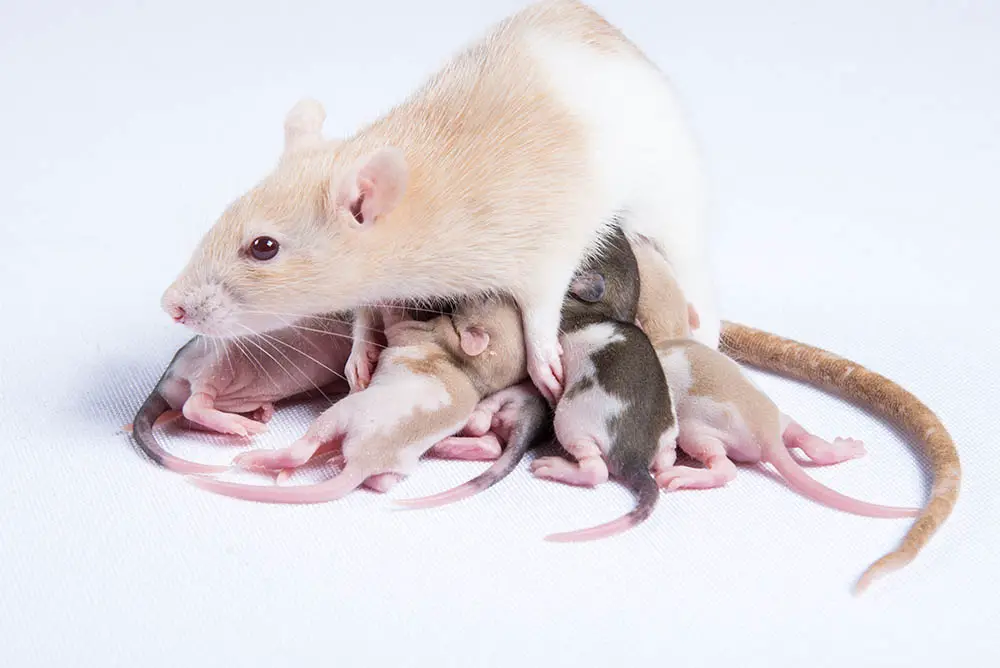
Conclusion
In rats, being in a litter us with a fascinating glimpse into the reproductive strategies and adaptability of these resilient rodents. Rats, particularly the common brown and black species, have long been subjects of scientific interest and pest control efforts due to their prolific breeding habits and remarkable adaptability to various environments. The size of a rats litters can vary significantly, influenced by several factors. These include the age and health of the mother, environmental conditions, and resource availability. On average, a rat litter can range from 6 to 12 pups, but reports of larger litters exceeding 20 are not uncommon. This variability in litter size highlights the adaptability of rats as a species, allowing them to thrive in a wide range of habitats and conditions.
Understanding the dynamics of rat reproduction is not only of academic interest but also carries practical implications. In urban settings, for instance, the ability of rats to reproduce rapidly can lead to infestations that pose public health risks and damage to property. Effective pest control strategies often rely on disrupting the reproductive cycle of rats, underscoring the of knowing how many rats are in a litter and the factors that influence litter size. Rat reproduction valuable insights into broader ecological and evolutionary processes. Rats have evolved their prolific breeding habits as a survival strategy, enabling them to rebound quickly from population declines caused by predation, disease, or other factors.
This adaptability has contributed to their success as a species, making them ubiquitous in many parts of the world. In rats are in a litter takes us on a journey through the complex world of rat biology and reproductive strategies. It reminds us of the intricate balance between nature and human civilization, where understanding these creatures is essential for managing their populations effectively and mitigating the challenges they may pose. Ultimately, rats serve as a testament to the resilience and adaptability of life in the natural world, prompting us to further explore and appreciate the mysteries of the animal kingdom.

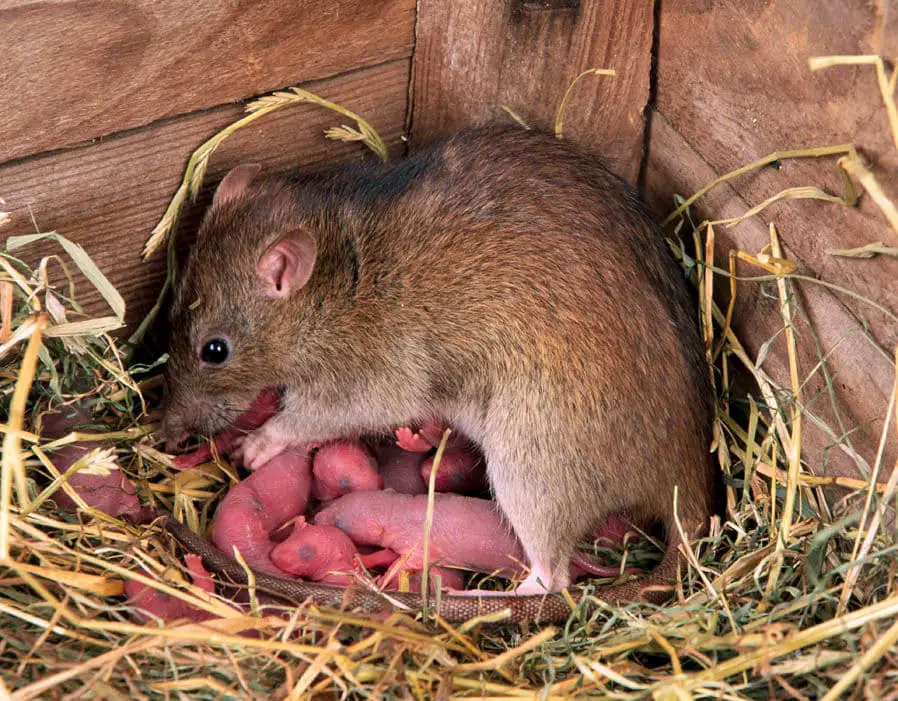
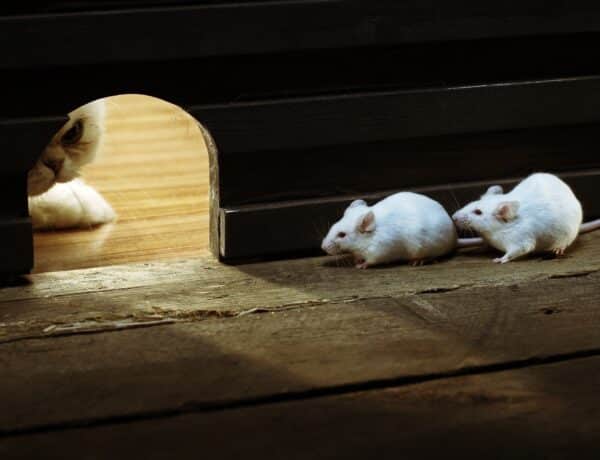
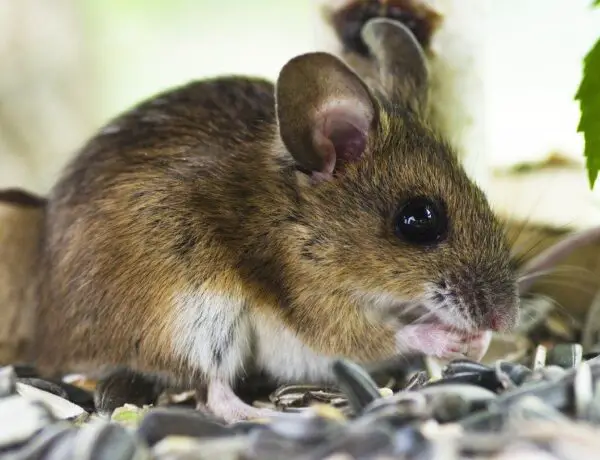
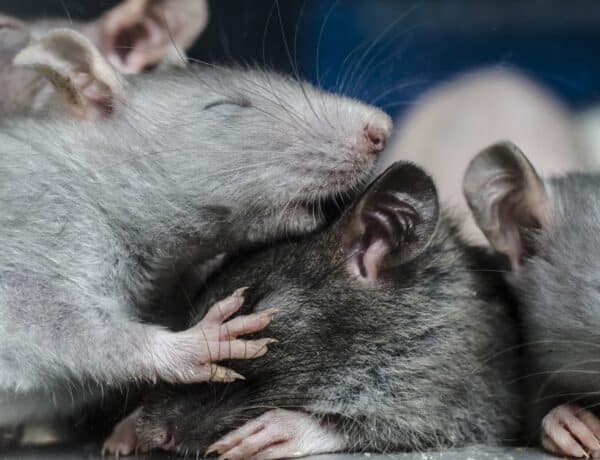
No Comments